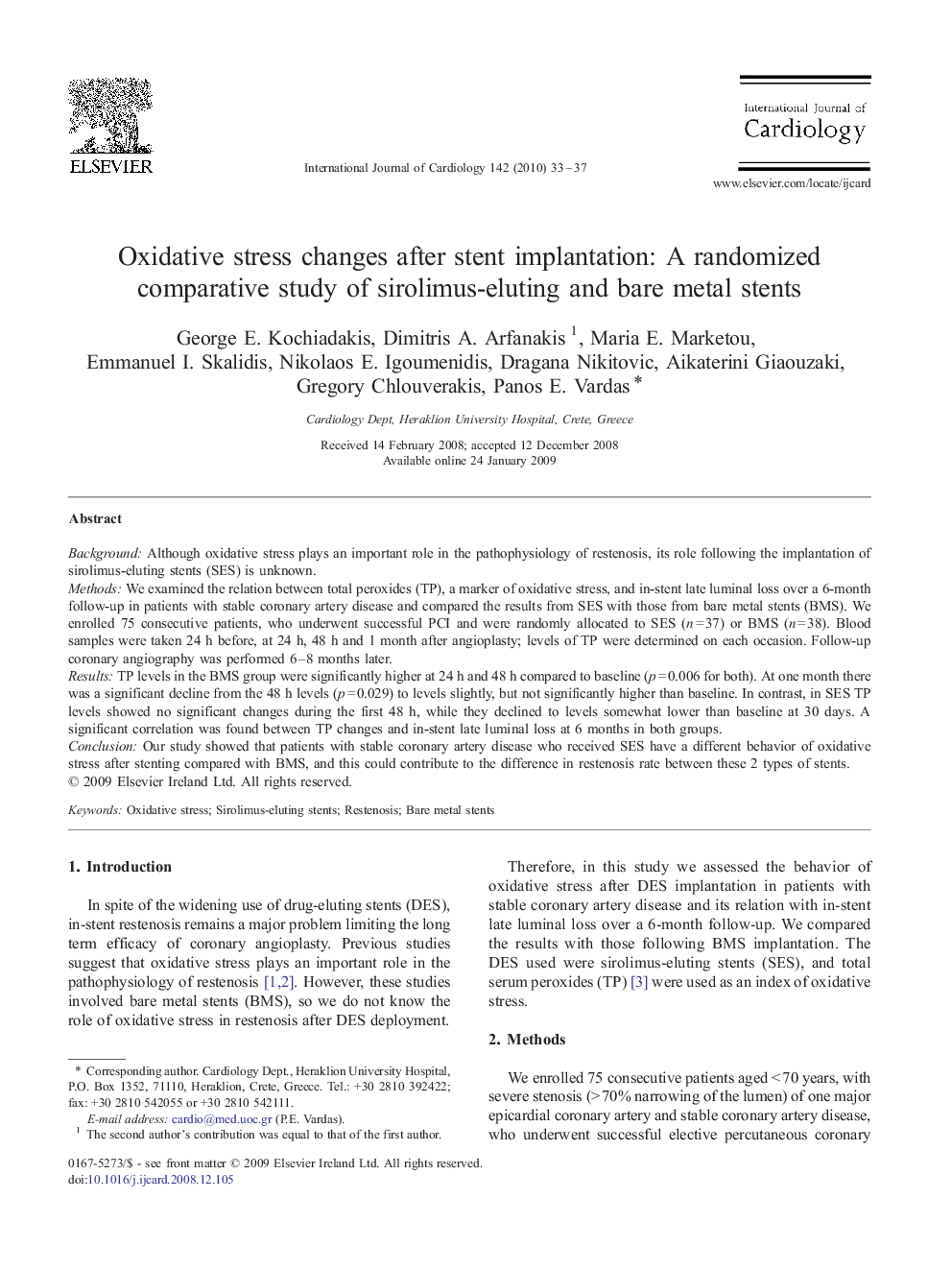| Article ID | Journal | Published Year | Pages | File Type |
|---|---|---|---|---|
| 2931961 | International Journal of Cardiology | 2010 | 5 Pages |
BackgroundAlthough oxidative stress plays an important role in the pathophysiology of restenosis, its role following the implantation of sirolimus-eluting stents (SES) is unknown.MethodsWe examined the relation between total peroxides (TP), a marker of oxidative stress, and in-stent late luminal loss over a 6-month follow-up in patients with stable coronary artery disease and compared the results from SES with those from bare metal stents (BMS). We enrolled 75 consecutive patients, who underwent successful PCI and were randomly allocated to SES (n = 37) or BMS (n = 38). Blood samples were taken 24 h before, at 24 h, 48 h and 1 month after angioplasty; levels of TP were determined on each occasion. Follow-up coronary angiography was performed 6–8 months later.ResultsTP levels in the BMS group were significantly higher at 24 h and 48 h compared to baseline (p = 0.006 for both). At one month there was a significant decline from the 48 h levels (p = 0.029) to levels slightly, but not significantly higher than baseline. In contrast, in SES TP levels showed no significant changes during the first 48 h, while they declined to levels somewhat lower than baseline at 30 days. A significant correlation was found between TP changes and in-stent late luminal loss at 6 months in both groups.ConclusionOur study showed that patients with stable coronary artery disease who received SES have a different behavior of oxidative stress after stenting compared with BMS, and this could contribute to the difference in restenosis rate between these 2 types of stents.
